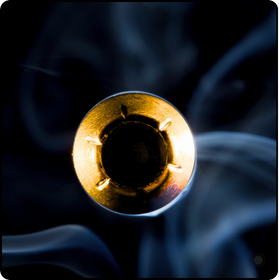Whether you’re a beginner or a seasoned shooter, understanding ballistics is one of the most important steps toward improving accuracy and performance. In simple terms, ballistics is the science of how a projectile behaves in flight — from the moment it leaves the barrel until it reaches the target. Learning the basics gives you more control over every shot and helps you make smarter decisions in the field or on the range.
Internal Ballistics: What Happens Inside the Gun
Ballistics begins the second you pull the trigger. Internal ballistics refers to everything that happens inside the barrel before the pellet or bullet exits the muzzle. In PCP (Pre-Charged Pneumatic) air rifles, pressurized air is released behind the pellet, forcing it forward. Factors like air pressure, valve release time, barrel length, and pellet shape influence the starting speed of the projectile. A stable and consistent air supply (such as the kind supported by SPOX5 shooters) is crucial for consistent shot velocity.
External Ballistics: Flight to the Target
Once the projectile exits the barrel, external ballistics takes over. Gravity starts pulling it downward the instant it leaves the muzzle. Wind, air resistance, humidity, pellet weight and shape all affect its flight path. This is why shooting at 30 m feels very different from shooting at 75 m. Lighter pellets slow down more quickly, while pointed and domed designs maintain their speed better over distance.
To compensate for drop and drift, shooters often “zero” their rifles at a specific distance. Knowing your holdover — how much you need to aim above the target — becomes second nature with practice and range time.
Terminal Ballistics: When the Pellet Hits
Terminal ballistics is what happens on impact. Hunters pay close attention to this area because it determines how the projectile transfers energy to the target. A well-designed pellet paired with sufficient velocity ensures a clean, ethical shot. Understanding energy transfer will help you match your ammunition to the type of game you’re pursuing — vital for responsible shooting.
How to Use Ballistics to Improve Your Accuracy
-
Know your velocity: Chronograph readings help you understand how fast your gun is shooting. Consistent speed = consistent accuracy.
-
Learn your trajectory: Spend time shooting at different distances to understand how your pellet behaves.
-
Use quality optics: A good scope with clear markings makes holdover adjustments much easier.
-
Practice in realistic conditions: Wind, slope, and temperature all play a role — train where you plan to shoot.
Ballistics may sound technical, but it’s simply about understanding how your shot travels. With a bit of knowledge and regular practice, any shooter can use ballistics to make smarter calls in the field. At SPOX5, we’re committed to supporting confident, skilled, and educated shooters every step of the way.

